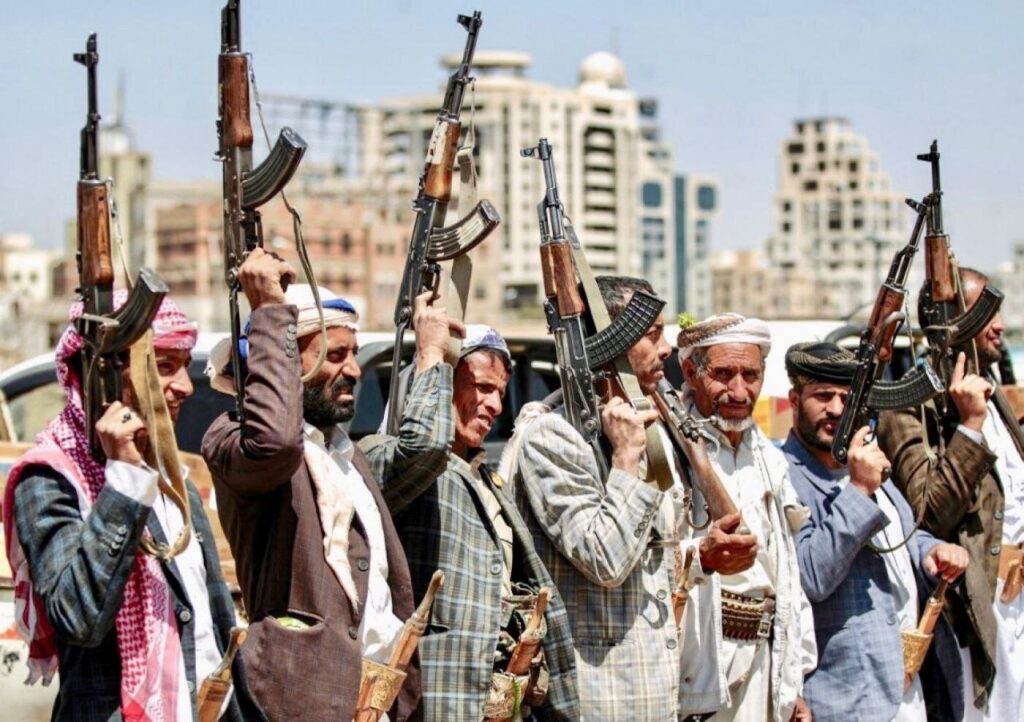Subject: Potential coordination or support by Russia in Iranian military actions targeting U.S. assets
Region: Middle East, Eastern Europe
Sources: Open-source intelligence, defense cooperation patterns, intercepted statements, historical precedents
Key Assessment
There is growing evidence and strategic logic suggesting that Iranian attacks on U.S. military personnel and assets — especially in Iraq, Syria, or the Persian Gulf — may involve coordination, facilitation, or at minimum, intelligence-sharing with Russia. The coordination is most likely informal or deniable, but tactically significant.
Key Arguments for Russian Coordination with Iranian Strikes
I. Shared Strategic Objective: Erode U.S. Presence in the Middle East
- Both Russia and Iran view the U.S. military presence as a direct threat to their regional ambitions:
- Iran sees U.S. troops as obstacles to regional hegemony and regime security.
- Russia seeks to undermine U.S. influence, especially in Syria, Iraq, and the Gulf, where it competes for arms markets and political sway.
Coordinated attacks serve mutual interests in weakening Washington’s deterrence.
II. Tactical Coordination in Syria: A Proven Pattern
- Russia and Iran have co-deployed in Syria for over a decade, with:
- Russian airpower + Iranian Quds Force ground ops
- Joint targeting of rebel and ISIS positions
- Shared intelligence on U.S. patrols and bases
If Iran strikes a U.S. convoy in Deir ez-Zor or Tanf, it’s highly probable Russia either “greenlighted” it or provided intel cover.
III. Intelligence Sharing via Liaison Channels
- Russian and Iranian defense services maintain active liaisons in Damascus, Baghdad, and Tehran.
- Russia may:
- Provide satellite or signals intelligence to Iran or its proxies (e.g., Kata’ib Hezbollah)
- Help deconflict timing to avoid Russian casualties or air traffic during Iranian strikes
Especially when drones or rockets are used, IRGC planners may confirm strike windows with Russian counterparts to avoid Russian “friendly fire” incidents.
IV. Proxy Warfare Synchronization
- Iran often uses proxies (PMF in Iraq, Houthis in Yemen, Hezbollah in Syria/Lebanon).
- Russia does not directly command them — but may synchronize narrative and tempo of escalation with Iran:
- Especially during times of U.S.-Russia tension (e.g., Ukraine aid votes, G7 summits)
- Attacks can be timed to distract U.S. attention or force defensive posture shifts
Example: Houthi strikes on Red Sea shipping closely mirror Russian narratives blaming the West for global instability.

More on this story: Assessing Russia’s Strategic Gamble with Houthi Cooperation
V. Cyber and EW Support
- Russian military-intelligence units (GRU Unit 26165, SVR-linked cyber actors) have:
- The capacity to jam U.S. radar, drone feeds, or early warning systems
- Could assist Iranian forces with disinformation or misdirection campaigns during attacks
Even limited cyber support increases the success rate of precision strikes by Iranian drones or rockets.
VI. Plausible Deniability Built In
- Russia uses “measured ambiguity” to avoid direct culpability while reaping benefits.
- It may facilitate weapons transfers, target intel, or propaganda cover — but leave operational execution to Iranian actors.
- This tactic reflects Russia’s doctrine of “indirect strategic confrontation” — bleeding adversaries below the threshold of open war.
Red Flags for Active Russian Involvement
| Indicator | Implication |
| Sudden radar shutdowns near Russian-controlled zones during strikes | Deconfliction or cooperation |
| Russian media pre-justifying Iranian “resistance” actions | Narrative synchronization |
| Similar target selection patterns (e.g., logistics hubs, comms towers) | Shared intelligence or operational guidance |
| Coordinated diplomatic posturing at UN | Strategic alignment after kinetic action |
🧭 Conclusion: Not Direct Control — But Operational Symbiosis
- Russia likely does not directly order Iranian strikes.
- But it facilitates, encourages, and supports them in covert ways — intelligence, timing, narrative, and sometimes EW/cyber tools.
- This makes the Iranian-Russian axis in the Middle East a strategic hybrid threat to U.S. assets — flexible, deniable, and persistent.
SCENARIO MATRIX: Russia–Iran Proxy Cooperation Escalation Outlook (2024–2026)
| Scenario | Operational Trigger | Iran’s Proxy Action | Russia’s Role | Likely U.S./Israeli Response | Strategic Impact | Escalation Risk |
| 1. Coordinated Drone Swarms on U.S. Bases in Iraq/Syria | U.S. deepens presence in Syria; strikes Iranian logistics | Kata’ib Hezbollah & PMF launch UAV attacks on U.S. logistics hubs | SIGINT sharing; EW jamming cover; deconfliction from Russian bases in Syria | Targeted U.S. airstrikes on militia positions in Iraq or Syria | Exposes U.S. vulnerability in CENTCOM AOR | Medium-High |
| 2. Multi-Theater Retaliation After Israeli Killing of IRGC Officials | Israel assassinates IRGC Quds Force figures in Damascus or Beirut | Hezbollah launches missiles; Houthis strike Red Sea; Shia groups target U.S. assets | Coordination of timing; public diplomatic support; anti-Israel UN campaign | Israel strikes Hezbollah arms depots and Syrian airports | Escalation across Levant; forces U.S. air cover for Israel | High |
| 3. Cyberattack on U.S. Military Comms or Gulf Infrastructure | U.S. disrupts Russian supply chains to Syria via sanctions | IRGC-affiliated hackers (e.g., MuddyWater) attack CENTCOM logistics or Saudi ports | GRU assists with malware vectors, false flag tools | U.S. cyber retaliation on IRGC servers, infrastructure disruption in Tehran | Global attention to Iran-Russia cyber nexus | Medium |
| 4. Russian PMC-Iran Proxy Convergence in Africa | Russia expands Wagner successor ops in Sahel | IRGC deploys military trainers or funds militia factions in Mali, Sudan, or CAR | Logistics coordination; PMC training exchange; joint ops | U.S. and France expand AFRICOM support; Israel boosts counter-intel in Ethiopia/Chad | Spreads conflict model to fragile states | Medium |
| 5. Covert Strike on Israeli or Jewish Targets Abroad | Iran seeks retaliation for sabotage inside Iran or Syria | Proxy-linked cells hit Israeli diplomatic or Jewish civilian targets in Latin America or Europe | Russian intel assets assist with surveillance or identity laundering | Israeli Mossad retaliates via assassinations; global condemnation | Rebuilds fear of global terror networks; raises stakes for Tehran | High |
| 6. Houthi Strike on U.S./Israeli Navy Asset in Red Sea | Israeli submarine patrol increases, or U.S. carrier strike group approaches Yemen | Houthis launch anti-ship cruise missiles or naval drones | Russian satellite data or electronic navigation spoofing shared covertly | U.S. destroys Houthi launch sites; ISR over Yemen expands | Direct threat to global trade; possible naval standoff | High |
| 7. Arms Transfers & Proxy Tech Upgrade | Collapse of nuclear deal talks; Iran needs deterrence | Hezbollah/PMF receive advanced drones or guided missiles | Russian transfer of components or dual-use tech via Belarus or Syria | Israeli preemptive strikes on storage sites; U.S. sanctions loop | Raises regional strike range, limits Israeli air superiority | Medium-High |
| 8. Coordinated Psychological Warfare Campaign | U.S. elections or Western instability | Iran and Russia flood social media with disinfo on Israel, Ukraine, Western “colonialism” | Shared platforms, coordinated AI-generated content, botnets | Cyber countermeasures, disinfo takedown teams, digital diplomacy | Weakens Western unity; fuels unrest in fragile democracies | Medium |
🔁 Interpretation and Use
- Red circles = kinetic or military escalations
- Yellow circles = hybrid, cyber, or diplomatic offensives
- U.S./Israel’s optimal strategy: preemptive disruption, proxy-targeted countermeasures, and alliance coordination (NATO, GCC, Egypt, Jordan)




